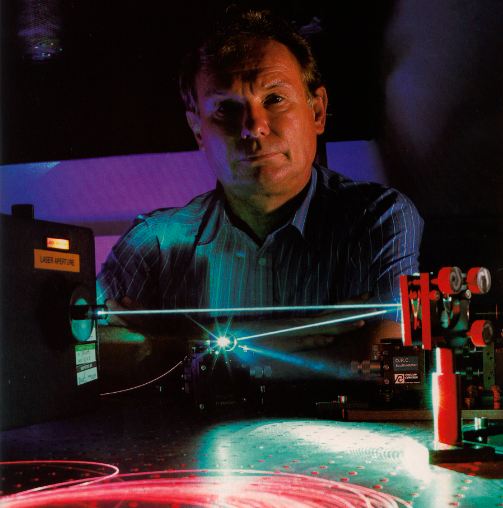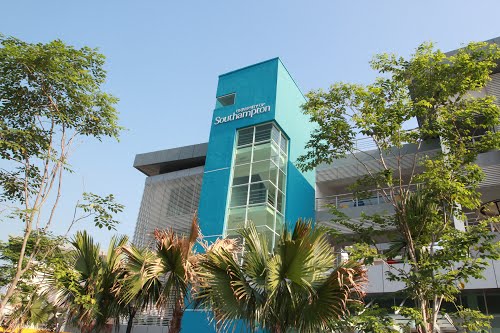Advancing aspiring engineers to the field of fibre optics

Afterschool Team
May 31, 2013
- University of Southampton, Malaysia Campus to offer Electronics and Electrical Engineering Programme in September 2013
Did you know that the fibre optic technology is the core technology in our telephone system, cable TV system and the internet? The physical outlook of fibre-optics is best described as a strand as thin as a human hair with the ability to carry digital information over long distances, but in the form of optically pure glass, arranged in bundles. Whilst fibre-optics are also used in medical imaging and mechanical engineering to date, the growth of fibre-optics goes beyond impossibilities.

In real-life applications, each time a person downloads a track to their iPod or watches a video on YouTube, they are making use of fibre-optic cable technology that made broadband possible and significantly affected the economy in its wake.
The person who pioneered research in fibre technology is a high-calibre alumnus from University of Southampton, Professor Sir David Neil Payne. He is amongst the best-known figures on the UK photonics scene after using fibre optics to successfully harness light for use in telecommunications, sensing and lasers for manufacturing. He has, to his credit, an astonishing number of key discoveries – including his pioneering research some 25 years ago which resulted in the world’s first optical fibre amplifier – the Erbium-Doped Fibre Amplifier (EDFA). This crucial component forms the backbone of the Internet and made possible its explosive growth through an ability to transmit and amplify vast amounts of data. Every time you use the Internet, your mobile phone or an automatic teller machine you are using technology developed at the University of Southampton.

With numerous leading contributions under his belt, Professor Payne continuously innovates the change of telecommunications, sensing and lasers landscape through his current research interest on high-power fibre lasers. With US funding, he led the team that broke the kilowatt barrier for fibre laser output to international acclaim and now holds many other fibre laser performance records.
“The erbium-doped fibre amplifier is a crucial invention that has made possible the global information superhighway and high-speed telecommunication networks, which are so important to us all in the 21st century. I am delighted that the unique contribution Professor Payne has made through his research is being recognized with the honour of a knighthood,” University of Southampton Vice-Chancellor, Professor Don Nutbeam said.
Although Professor Payne has spent nearly five decades in research at Southampton – starting as a student there in the 1960’s - he is also recognized as an entrepreneur in the photonics field. Thanks to his activities, fibres invented and made in Southampton are on the Moon and Mars while Professor Payne’s ideas navigate airliners, cut steel, mark smart phones, manufacture life-saving medical devices, help defend the nation and power the Internet. His pioneering work in photonics has led to the creation and development of a cluster of nine companies in and around Southampton helping to boost the local economy. He founded SPI Lasers PLC, which has recently been purchased by the Trumpf Corporation of Germany, the world’s largest manufacturer of lasers for industrial use.
New engineering courses in the pipeline
Come September 2013, USMC will pave more career paths for aspiring engineers when Southampton launches its undergraduate MEng in Electrical and Electronics Engineering (EEE) which has a long and successful history and an unrivalled reputation for both teaching and research.

Southampton’s degree in Electrical and Electronics Engineering features a variety of innovative teaching methods and assessment including coursework, group work and exams. Future graduates are required to complete a four-year study with their first two years of study hosted at the Malaysia Campus and the final two years at the UK campus in Southampton. Students at the Malaysia Campus benefit the same teaching modules as those on the first two years in Southampton at an overall cost of 40 per cent less.
In their final two years, students will be exposed to some of Southampton’s outstanding electrical engineering teaching laboratories and computing facilities including the renowned world-leading high-voltage laboratory.
Ranked first in the UK by the Guardian University Guide for Electrical and Electronics Engineering & Electrical Engineering, the University of Southampton has been among the top 10 places in the UK for Computer Science and IT consistently with that pedigree, it is natural that Southampton’s graduates are highly sought after by employers.
This programme also provides students’ with some flexibility to specialise in what interests them most about either electrical or electronic engineering, or to develop a broader understanding of EEE and go on to solve the great challenges of tomorrow such as the 'smart grid'.
The degree in Electrical and Electronic Engineering joins Southampton’s undergraduate MEng in Mechanical Engineering as the two leading programmes offered by the University through its new EduCity campus in South Johor, Southampton is also the UK’s leading university for Mechanical Engineering, as rated by the Guardian University Guide.
Professor John McBride, the Chief Executive Officer of University of Southampton, Malaysia Campus, added, “The University of Southampton is recognised amongst the top one percent of the world’s universities and our engineering portfolio is consistently rated very highly in university league tables. We are very proud of that reputation and believe that students who choose to study with us at the University of Southampton Malaysia Campus will receive a first class education from a world-leading institution.”
For more information about the University of Southampton Malaysia Campus and its undergraduate MEng programmes in Electrical and Electronic Engineering or Mechanical Engineering please visit www.soton.ac.uk/malaysia



